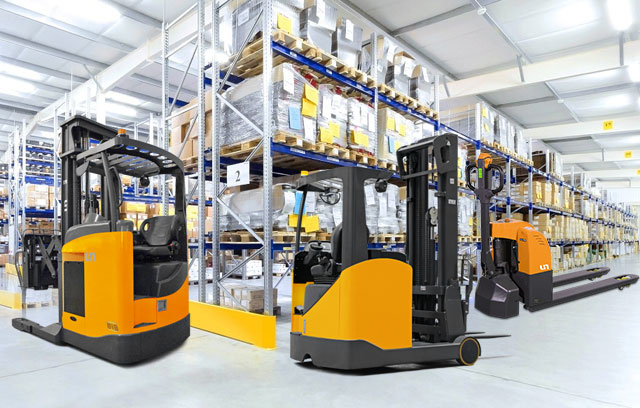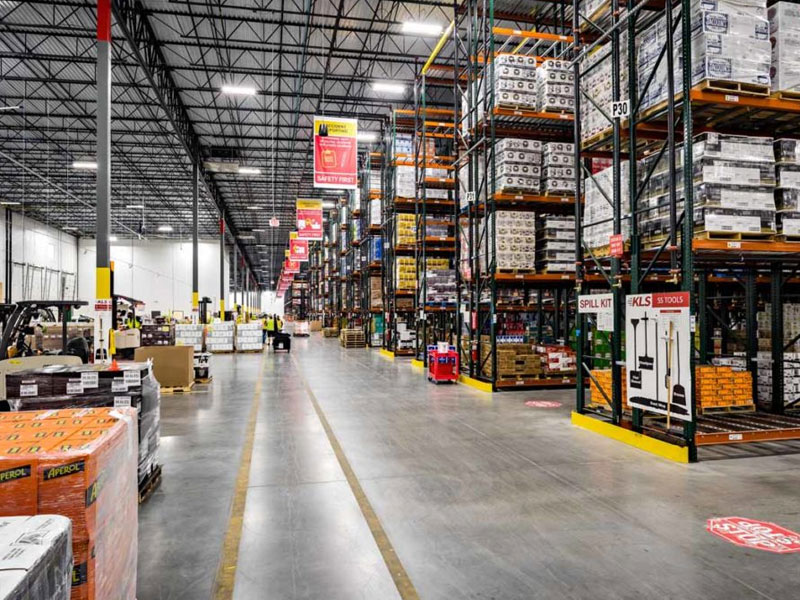The last decade has brought forth a boom in forklift lithium battery adoption, especially the last few years. It has gone so quickly that it seems that many organisations are treating this emerging power source as a “plug and play” solution that is ready to solve all power issues right out of the box.
In fact, there are a number of things to be cautious about when considering the use of lithium power – and we believe all manufacturing and distribution businesses should be better informed about the pros and cons of this still-new power source.
.jpeg)

NL Series 2.0T-3.5T Li-ion Battery Forklift
.jpeg)
Pros of Using Lithium Power
1.Lithium makes it possible to keep moving. By charging on the go, as opposed to having to stop to charge like we do with lead acid batteries, your team can maintain a higher level of uptime and productivity.
2.For businesses utilising more than 3,000 uptime hours per year, lithium can be a terrific option. High-paced applications that need to work long hours every day can benefit from the possibilities of lithium power.
3.As energy efficiency and sustainability become increasingly important, lithium is becoming more and more attractive. This power source is more energy efficient than lead acid batteries, and can help businesses meet their sustainability goals.
Cons of Using Lithium Power
1.Despite what many believe, lithium is not plug and play. Because older commercial trucks and forklifts were designed around lead acid batteries, integration with lithium requires more time, effort and financial investment.
2.Lithium has a much higher cost, up to four times the cost of lead acid. These costs can sometimes be recouped by lowered maintenance costs over time, but the initial investment can significantly inhibit cash flow for the business.
Your Action Plan
Once you’re informed about the pros and cons of utilising lithium power, you’re ready to make an action plan to optimise your power management system. Here’s what we suggest in terms of next steps:
Take a step back from selecting a power source and work on your broader goals instead. Consider what you’re hoping to achieve as a result of your new power management system. Is it increased productivity? Improved sustainability? Set clear goals that your power can help you achieve.
Once you have your broader goals in place, take a more thoughtful, thorough approach to exploring the range of power options available to you on the market today. Your power sources should fit your goals, your team, your product, and your current operations. Engage with an outside expert to explore and evaluate options, if possible.
Consider a hybrid power approach. For many of our customers, we ultimately recommend a hybrid mix of lead acid and lithium - with the proportion of each varying with the needs and goals of the business.
With a balanced perspective on lithium power, a thorough and well thought-out strategy, and a dedication to rigorous evaluation and maintenance of your power usage, your facilities have the best possible chance to realise the dream of benefiting and profiting from a well-oiled and efficient power system.
2.Lithium forklift finance rises – CBA
Forklift finance is among the biggest growth areas for Commonwealth Bank, according to FY22 data.
A record number of Australian businesses invested in new equipment and machinery last financial year, the bank notes.
In FY22, CBA recorded the largest volume of new asset finance lending in the bank’s history, with businesses in agriculture, manufacturing and production driving demand for equipment and machinery.
Assets such as forklifts (up 49%), trailers (up 37%), cranes (up 26%) and trucks (up 13%) topped the list.
Mike Vacy Lyle, CBA group executive business banking, says this growth in FY22 suggests that most businesses are still positive about the future, notwithstanding the impact of rising supply chain costs and constraints.
“Australian businesses have proved resilient as we’ve adjusted to living with COVID-19,” he says.
“Many have increased their investment in productive capacity to strengthen their businesses and are taking positive action to overcome issues including supply chain disruptions by refining procurement processes and asset management.
“This led to significant investment in new vehicles, equipment and technologies in FY22. Businesses are continuing to adapt their strategies in response to the changing operating landscape and ongoing uncertainties in the domestic and global environment.”

NL Series 2.0T-3.5T Li-ion Battery Forklift
The NL series new lithium battery forklift, capacity from 2,000 to 3,500kg, adopts UN internal combustion forklift 's design with the strong chassis, frame, counterweight and mast.
The power structure is designed to adopt UN electric forklift's concept, which use full AC system, Italian imported ZAPl controller, BMS control system and high quality lithium battery.
This combination of IC forklift and electric forklift makes an ideal solution to reach customers' satisfaction on cost saving and environmental friendly.











 中文简体
中文简体 عربى
عربى Español
Español














